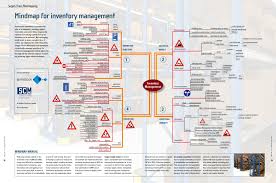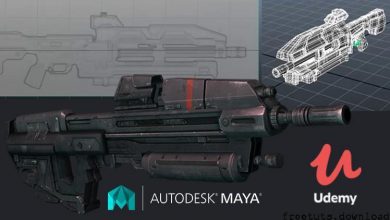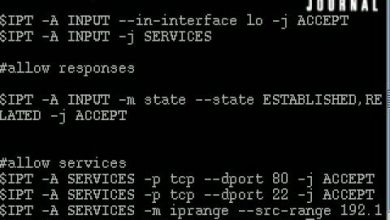Inventory Management A-Z – Supply Chain & Business Operations

Inventory Management A-Z – Supply Chain & Business Operations Free Tutorial Download
This MBA style course prepares and empowers you to make a REAL difference. Turbo-charge your career and your business.
This course is for the new or aspiring supply chain & operations manager, the ambitious procurement professionals, the striving logistics supervisors, hands-on production planners and the practical business optimization analysts.
- Take control of your supply chain to have and “impact” and “improve” your business operations – manufacturing, services, retail, logistics industrial operations and production.
- Equip yourself to take a new leading role in your workplace – improving your processes, systems, business / organization.
- Understand the fundamentals, then details of the essentials of supply chain management, the core business trade-offs, essential analysis, calculations and basic optimisation methods.
- Become the Supply Chain Management authority in your team on improving the operations systems in your business.
Course Sections:
1. Introduction to Supply Chain Management
2. Stakeholders and Relationships
3. Components of a Supply Chain
4. Types of Supply Chain and Value Stream Mapping
5. Forecasting Demand
6. Demand Management
7. Bullwhip Effect
8. Sales and Operations Planning
9. Inventory Management
10. Measuring Performance with Metrics / KPIs
In this course, you will learn:
- Objectives: What are the “Aims and Objectives” of a good Supply Chain. How to balance the “Trade Offs”
- Type of Supply Chain: The difference between an “efficient” and a “responsive” supply chain and why you can be both
- Relationships: Segment your Stakeholders and Tailor your Relationships. Are you transactional or collaborative?
- Forecasting: Quantitative and Qualitative Methods of Forecasting Demand.
- Excel work-throughs: Worked examples in excel of the most common quantitative forecasting methods and calculating forecast error.
- Reducing Variation: Why demand variation is the enemy and how you can control it
- Bullwhip Effect: Control the Bullwhip Effect: What it is, how does it happen (to us all!) and how to control it
- Improve a Supply Chain: By reducing Delays, Uncertainties and Decision Tiers
- S&OP Planning Structure: MRP, ERP and Software integration
- Inventory: The core reasons we “need” inventory and why it really costs us so much more than most managers think
- KPIs: 5 essential supply chain Metrics to give you a “deep” and “balanced” view of your performance
Business operations come in all shapes and sizes with a host of unique challenges; but good supply chain management is essential to them all. Whether you work in retail, manufacturing production, distribution and logistics or even service companies such as restaurants, retail, hospitality or health and beauty; – an effective supply chain is a key determent of your business’s success. Getting a strong control and continuously improving your business supply chain operations is essential to remain competitive, improving profitability, improving customer satisfaction, reducing costs and improving delivery.
A solid grasp of the “wider” supply chain picture is essential to be considered for a managerial position or seek promotion as higher roles require greater stakeholder relationships, building partnerships and business agreements either with other supply chain functions within your business or external companies.
Take control of your career and equip yourself with a solid base in Supply Chain Management; full of practical insights and tools that you can use right now to unlock the potential of yourself and your business!
FULL COURSE CONTENTS
1. Introduction to Supply Chain Management
A Life Changing Supply Chain
Welcome
The Supply Chain of Life – Blood
Why is Supply Chain Management Important?
What is Supply Chain Management?
Aims and Objectives of a Good Supply Chain
Key Activities in Supply Chain
2. Stakeholders and Relationships
Stakeholders and Relationships – Introduction
The Main Stakeholders
Suppliers, Producers and Distributors
Retailers and End Customers
Stakeholders and their Relationships
Vertical and Horizontal Relationships
Segmentation of Suppliers
Transactional vs Collaborative Relationships
3. Components of a Supply Chain
Components of a Supply Chain – Introduction
OEMs, Supplier Tiers and Internal Functions
Other Components of a Supply Chain
A Typical Supply Chain
4. Types of Supply Chain and Value Stream Mapping
Efficient vs Responsive Supply Chains
Matching Supply Chain Type to Product Type
Value Stream Mapping
VSM – An Example talk-through (VSM – example map)
5. Forecasting Demand
Forecasting Demand – Introduction
Why do we Need a Forecast?
The Golden Rules of Forecasting
Collaborative Forecasting – What
Collaborative Forecasting – Why
Collaborative Forecasting – How
Forecasting Methods
Quantitative Forecasting
Forecasting using Moving Averages
Forecasting using Weighted Averages
Forecasting using Exponential Smoothing
Calculating Forecast Error
Spotting Trends from Noise
6. Demand Management
Waiting for the Barber – Story
Demand Management – Introduction
What is Demand Management?
Causes of Demand Variation
External Demand Management – Methods
Internal Demand Management – Methods
7. Bullwhip Effect
Bullwhip Effect – Introduction
Demand Management through the Supply Chain
The Bullwhip Effect – Background
The Bullwhip going up the Supply Chain
Why Does It Happen?
Reducing Delays to Improve a Supply Chain
Reducing Uncertainty to Improve a Supply Chain
Reducing Decision Tiers to Improve a Supply Chain
8. Sales and Operations Planning
Sales and Operations Planning (S&OP) – Introduction
What is S&OP for?
S&OP – Planning Structure
Independent vs Dependent Demand
Bill of Materials (BOM)
Materials Requirements Planning – Overview
MRP continued
Enterprise Resource Planning – ERP
Supply Chain Management Software
9. Inventory Management
Inventory Management – Introduction
What is Inventory?
Types of Inventory
Why do we Need Inventory?
Why Else do we Hold Inventory?
Costs of Inventory
Financial Costs of Inventory
Ordering Costs of Inventory
Holding Costs of Inventory
Operational Costs of Inventory
10. Measuring Performance with Metrics / KPIs
Measuring Performance – Introduction
What are Metrics?
Business’s Perspective on Performance
Categories of Supply Chain KPIs / Metrics
Selected Metrics / KPIs for Supply Chain
Inventory Turns / Turnover
Days On Hand / Days Inventory Outstanding
Cash to Cash Cycle Time
Customer Lead Time
On Time In Full % (OTIF)
Fill Rate %
Wrap Up
Congratulations
Who this course is for:
- Supply Chain Professionals. Working in Operations, Manufacturing, Retail or Service sectors, Production and Industry
- Logistics, Purchasing, Customer Relationship Managers
- Financial Controllers, Accountants, Business Analysts & Consultants
- Small Business Owners & Operations Managers
- Ambitious Self-Starters who want to have a Bigger Impact at work, Improve Things and Get Noticed
- A desire to Become the Authority in your workplace on Supply Chain Management
Download Inventory Management A-Z – Supply Chain & Business Operations Free
https://drive.google.com/file/d/1iBxU-KiFSuciH6XDMY5-f2tF8zdYXaVl/view?usp=sharing
https://drive.google.com/file/d/1MK_4GvuCXt0nmkFJy-JnDfT-jO1tenu6/view?usp=sharing
https://drive.google.com/file/d/1XNfZMbT64SYEdR9AiRZoLMWwGZB_q3TA/view?usp=sharing
https://uptobox.com/jav2lgkadl52




